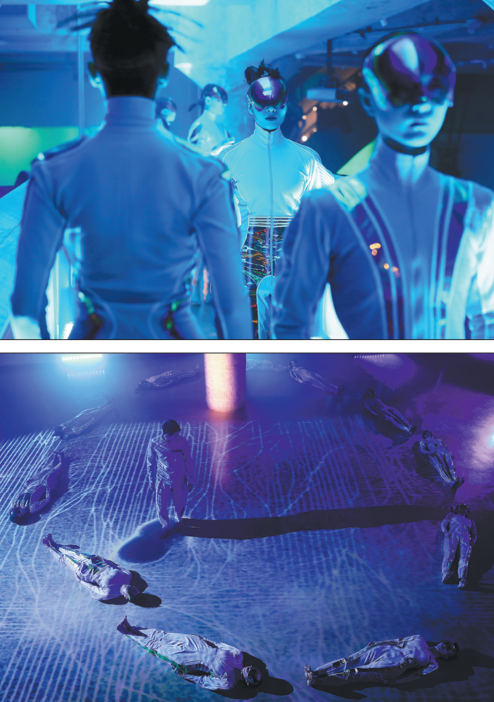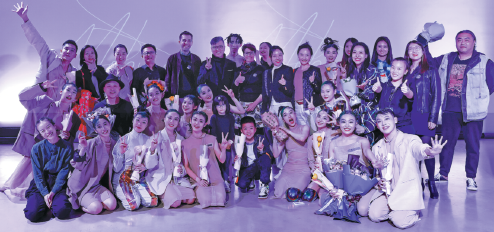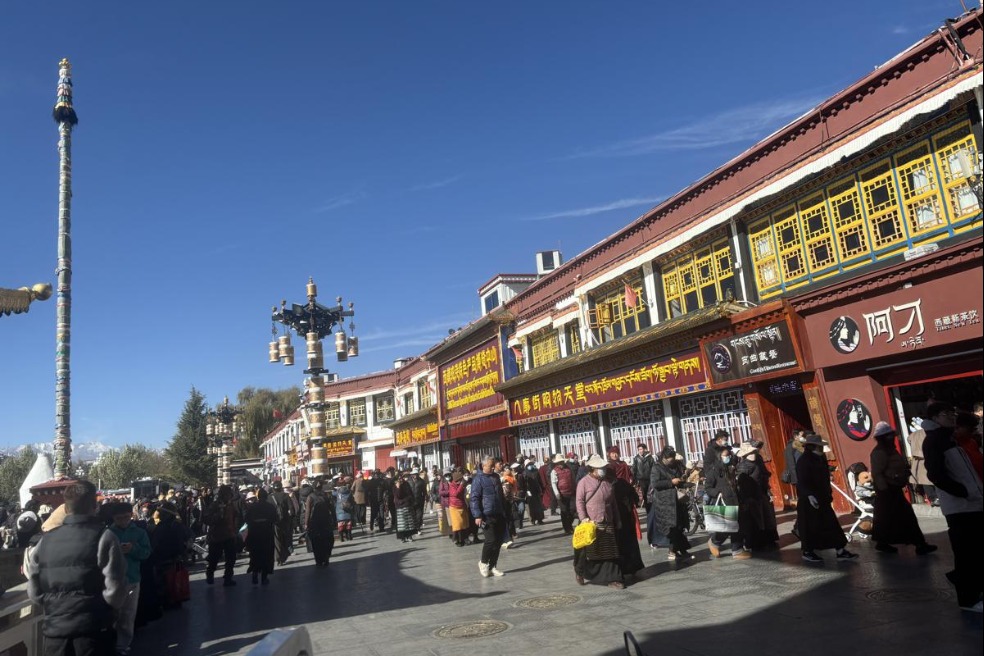A French connection
Interactive dance drama Mobius, jointly created by students and faculty of institutions in Beijing and Lyon, builds a unique bridge between artists and the audience, Cheng Yuezhu reports.

Upon arriving at the venue, it was almost difficult for members of the audience to tell when or where the performance began — there was no seating in the dimly lit space, and people dressed in futuristic costumes walked mechanically among them or simply did their own thing.
At that moment of wonder and bewilderment, perhaps only the projections on the wall, showing the name of the performance, Mobius, could reassure them that they had arrived at the right place.
When the show actually began, the audience members could choose where they viewed the performance — stand in the corner of the hall, lean on the banisters upstairs, or walk around following the particular performers they'd like to watch.
The immersive dance performance, Mobius, debuted at the CHAO Bridge Space in Beijing on April 22 as part of the 17th edition of Festival Croisements, an annual event of cultural exchanges between China and France.
This production is also a collaborative project between the two countries, jointly created by the School of Arts and Communication at Beijing Normal University and the Lyon National High Conservatory of Music and Dance in France.
"I prefer to see it as an artistic action rather than just a theater performance or a show," says Xiao Xiangrong, dean of the School of Arts and Communication, who is the project's cofounder and artistic director.
"It is open-ended. Only when the audience attends and participates in the performance, and interpersonal communication is established, can we say that our creative vision is fulfilled."
Diverting from the conventional idea that the audience is merely a viewer of the creators' works, according to Xiao, in this contemporary project, the audience plays a part along with the creators.
In one scene, for example, the dancers are holding mobile phones and filming one another, with the footage projected live on the wall. A lot of the viewers film the dancers, but what they do not know is that a camera is recording them doing so.
"In the end we will produce a video, that will truly complete the work. That's why I consider it an artistic action that achieves people-to-people interaction," Xiao adds.
Dai Jian, another cofounder of the project and an associate professor from the Beijing school, says that the title comes from the founders' thoughts about the relationship between people and technology.
Initially agreeing to present an intercultural exchange, the creators decided to zoom in on the changes of life brought by the universal experiences of facing technological advances.
"Technological development has made people's lives much more convenient, but it has also complicated our lives. We probably need to learn a new skill every month to keep up with the times, we might become more greedy or competitive, and other issues have arisen such as environmental damage," Dai says.
"The information society has two sides. Our pursuit of progress is also restricting or stifling us. One day, Xiao proposed the concept of the Mobius strip, which can concretely demonstrate the transition between the positive and negative aspects of a cycle."
Consisting of three parts — order, manipulation and celebration — the production aims to present humans moving between reality and the virtual world, and inspires the audience to reflect on its relationship with artificial entities such as manufacturing, technology and information.
The collaborations between the two institutions began in 2014, when representatives from Beijing Normal University visited the French conservatory. In 2019, the institutions made a plan to deepen exchanges among their students and teachers, and jointly produce cross-cultural works.
The institutions have since been exploring ways to cooperate in various aspects, including curricula, seminars, workshops and artistic creation. Over the past two years, teachers and students from both institutions cocreated the production and rehearsed online.
"In this production, one can see the beautiful and precise body language of dancers, but also the casual or even flashy movements often seen in clubs or on social media. We have incorporated all these different types of body language because they present a diverse picture of contemporary culture," Dai says.
"Modern dance is not just a genre with a specific body language. It is a sense of open-mindedness, inclusiveness, catharsis and individual choice. We are exploring ways to give more space to the performers and the audience."



Today's Top News
- Judicial reform critical for modernizing governance
- Effective use of investment emphasized
- China's shuttle diplomacy strives to reach ceasefire
- Nanjing Museum's handling of donated art, relics being probed
- Key role of central SOEs emphasized
- New travel program hailed as 'milestone'






























